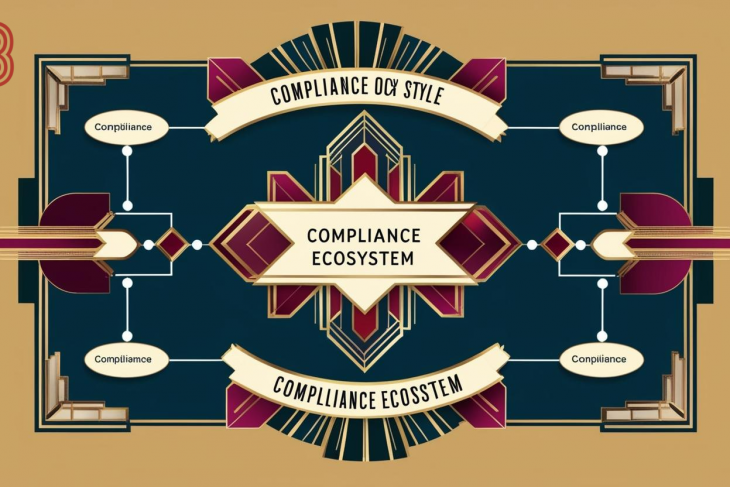
Introduction
In today’s digital era, information policy and security are integral components of risk management strategies for organizations worldwide. Cyber threats, data breaches, and regulatory requirements make it imperative for businesses to establish robust information policies and security frameworks. The objective is to mitigate risks associated with unauthorized access, data loss, and compliance violations while ensuring business continuity and resilience.
Understanding Information Policy
Definition and Importance
An information policy is a set of rules and guidelines governing the management, security, and use of data within an organization. It defines how data should be created, stored, accessed, shared, and disposed of in a secure and compliant manner.
Information policies are crucial for:
Ensuring data confidentiality, integrity, and availability (CIA triad)
Compliance with legal and regulatory standards
Protecting intellectual property and sensitive information
Enhancing operational efficiency and data governance
Minimizing risks associated with cyber threats and human errors
Components of an Effective Information Policy
Data Classification – Categorizing data based on sensitivity and access levels.
Access Control – Defining roles and permissions for data access.
Data Retention and Disposal – Establishing guidelines for storing and securely discarding data.
Compliance and Legal Requirements – Ensuring alignment with laws like GDPR, HIPAA, and CCPA.
Incident Response and Reporting – Outlining procedures for handling security breaches.
Employee Training and Awareness – Educating staff on security best practices.
Information Security in Risk Management
The Role of Information Security
Information security (InfoSec) is a fundamental aspect of risk management that focuses on protecting an organization’s data assets from threats such as cyberattacks, unauthorized access, and data breaches. Effective security policies safeguard sensitive information from being compromised, ensuring business continuity and regulatory compliance.
Key Information Security Principles
Confidentiality – Ensuring that only authorized users can access sensitive information.
Integrity – Maintaining accuracy and reliability of data.
Availability – Ensuring data and systems are accessible when needed.
Accountability – Tracking and monitoring access and modifications to data.
Resilience – Implementing measures to recover quickly from security incidents.
Common Security Risks and Threats
Cyberattacks – Ransomware, phishing, malware, and hacking attempts.
Insider Threats – Employees or contractors misusing access privileges.
Data Breaches – Unauthorized access leading to data leaks.
Human Errors – Weak passwords, accidental data sharing, or misconfigurations.
Third-party Risks – Vendors and partners with inadequate security measures.
Risk Management Frameworks and Standards
Several frameworks and standards help organizations integrate information security into their risk management strategies.
1. NIST Cybersecurity Framework (CSF)
The National Institute of Standards and Technology (NIST) CSF provides a structured approach for organizations to manage and reduce cybersecurity risks. It consists of five core functions:
Identify – Understanding risk exposure and assets.
Protect – Implementing safeguards to mitigate risks.
Detect – Monitoring systems for anomalies.
Respond – Developing plans to address security incidents.
Recover – Ensuring swift recovery from cyber incidents.
2. ISO/IEC 27001
This international standard provides guidelines for implementing an Information Security Management System (ISMS). It emphasizes risk assessment, continuous improvement, and regulatory compliance.
3. COBIT (Control Objectives for Information and Related Technologies)
COBIT is a governance framework focusing on aligning IT security with business objectives. It helps organizations manage risk, optimize resource usage, and ensure regulatory compliance.
4. CIS Controls (Center for Internet Security)
CIS Controls provide a prioritized set of cybersecurity best practices, including multi-factor authentication, endpoint protection, and secure configuration management.
Best Practices for Implementing Information Security in Risk Management
1. Conduct Regular Risk Assessments
Risk assessments help identify vulnerabilities, assess potential threats, and determine mitigation strategies. Organizations should:
Perform periodic security audits
Analyze historical security incidents
Conduct penetration testing and vulnerability assessments
2. Establish Strong Access Controls
Implementing robust Identity and Access Management (IAM) solutions ensures that only authorized personnel can access sensitive data. Best practices include:
Role-based access control (RBAC)
Multi-factor authentication (MFA)
Least privilege principle (granting minimal necessary access)
3. Encrypt Sensitive Data
Data encryption protects information from unauthorized access, both in transit and at rest. Organizations should use:
AES-256 encryption for data storage
TLS/SSL protocols for secure communication
End-to-end encryption for messaging and email services
4. Implement a Robust Incident Response Plan
An Incident Response Plan (IRP) enables organizations to detect, respond to, and recover from security breaches efficiently. It should include:
Incident identification and categorization
Roles and responsibilities of response teams
Communication protocols
Post-incident analysis and reporting
5. Train Employees on Cybersecurity Awareness
Human errors contribute significantly to security breaches. Conducting regular security awareness training helps employees:
Recognize phishing attempts
Follow password security best practices
Report suspicious activities
6. Secure Third-party Vendors and Supply Chain
Organizations must assess the security posture of third-party vendors and partners by:
Enforcing strict vendor security requirements
Conducting third-party risk assessments
Monitoring supplier cybersecurity practices
7. Maintain Compliance with Regulatory Standards
Adhering to industry-specific regulations mitigates legal and financial risks. Key regulations include:
General Data Protection Regulation (GDPR) – Protects EU citizens’ personal data.
Health Insurance Portability and Accountability Act (HIPAA) – Safeguards healthcare information.
Payment Card Industry Data Security Standard (PCI DSS) – Ensures secure payment transactions.
8. Invest in Advanced Security Technologies
Leveraging modern security technologies enhances risk management. Key solutions include:
Artificial Intelligence (AI) and Machine Learning (ML) for threat detection
Security Information and Event Management (SIEM) systems for real-time monitoring
Endpoint Detection and Response (EDR) for securing devices
Zero Trust Architecture for continuous verification of access requests
Future Trends in Information Security and Risk Management
1. Rise of AI-Driven Security
AI-powered security tools enhance threat detection and response capabilities by analyzing vast amounts of data in real time.
2. Growth of Zero Trust Security Models
Organizations are increasingly adopting Zero Trust models, ensuring that no user or system is automatically trusted, reducing the risk of insider threats.
3. Expanding Regulatory Compliance Requirements
Governments worldwide continue to introduce stringent cybersecurity laws, requiring organizations to enhance data protection measures.
4. Increasing Focus on Cloud Security
With businesses migrating to cloud-based infrastructures, securing cloud environments against data breaches and misconfigurations remains a top priority.
5. Enhanced Cyber Resilience Strategies
Organizations are investing in cyber resilience frameworks to ensure they can withstand and recover from major cyber incidents effectively.
Summary
Information policy and security play a crucial role in risk management by protecting sensitive data, ensuring compliance, and mitigating cyber threats. Organizations must adopt comprehensive security frameworks, enforce strong access controls, train employees, and invest in advanced security technologies to safeguard their digital assets. By staying proactive and adapting to emerging threats, businesses can minimize risks and ensure long-term resilience in an evolving cybersecurity landscape.




















